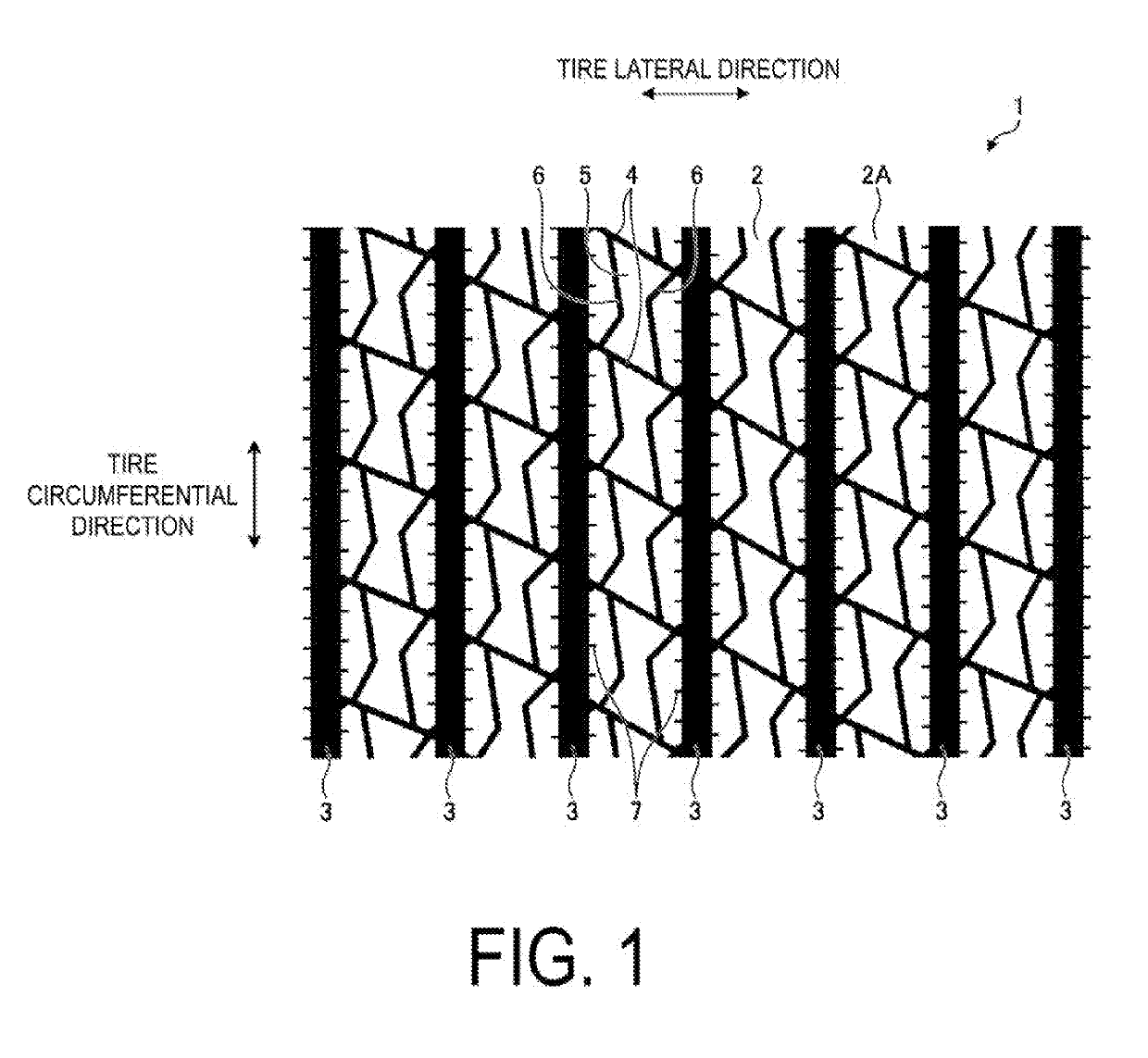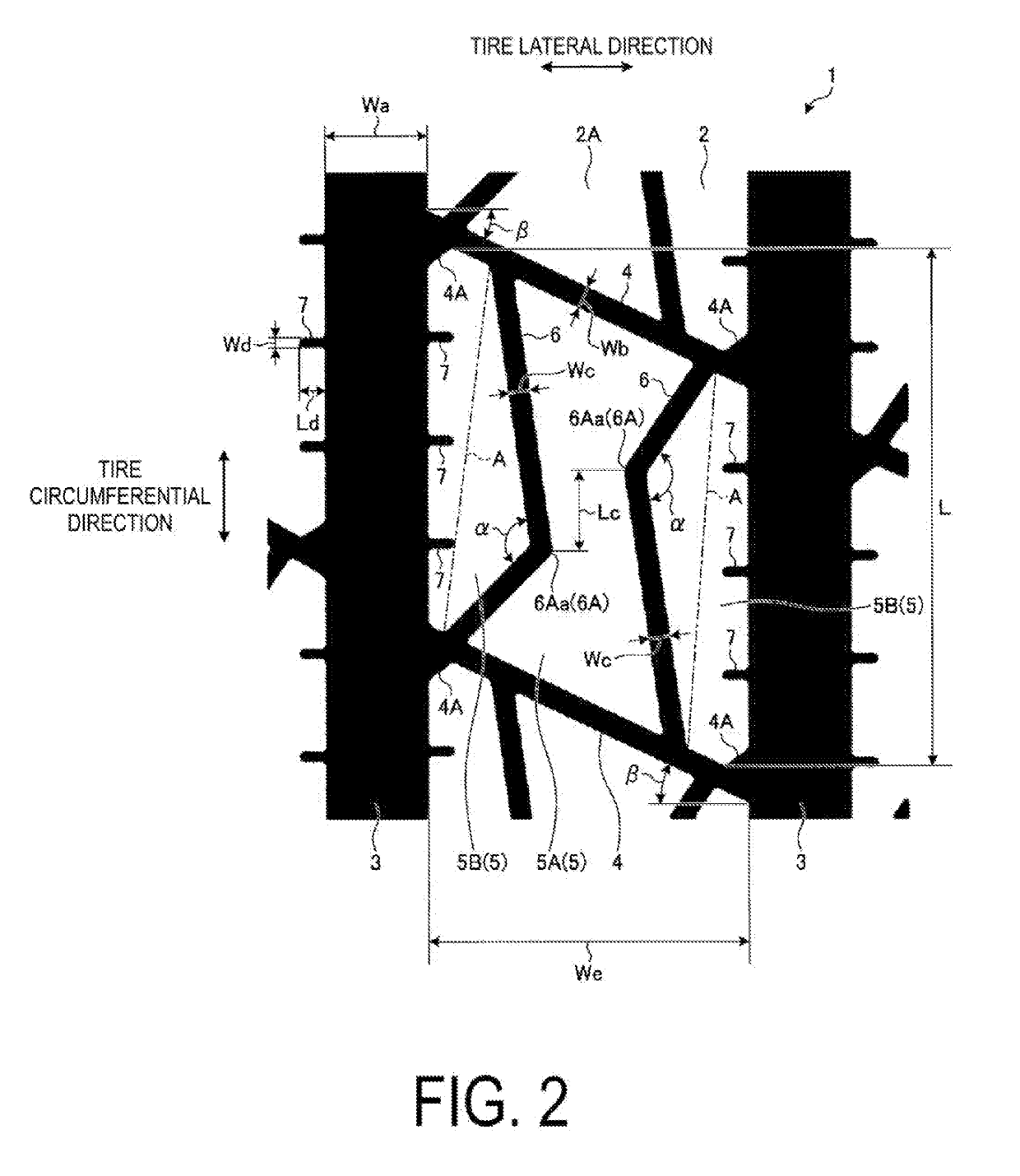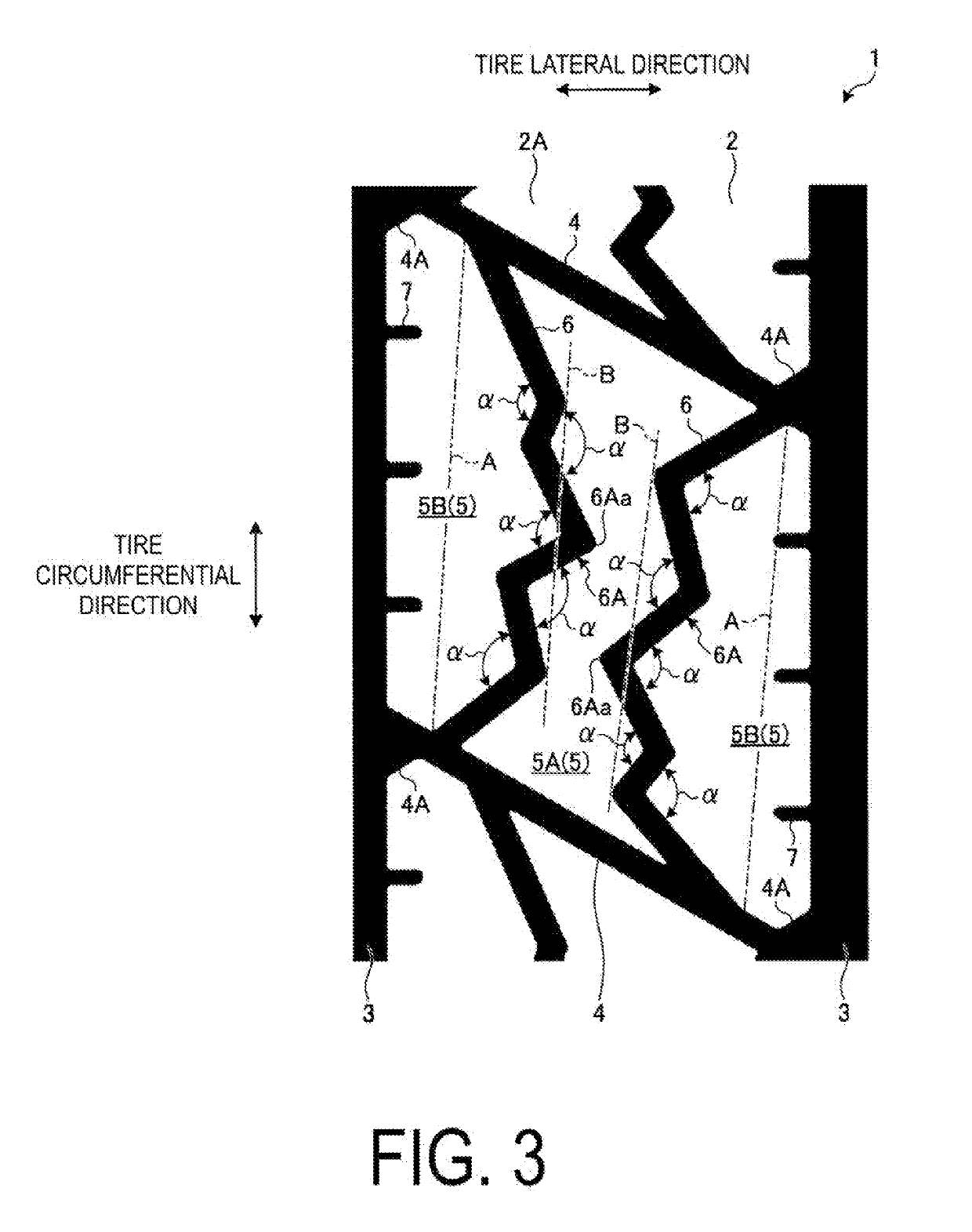Pneumatic Tire
a pneumatic tire and tire body technology, applied in the field of pneumatic tires, can solve the problems of uneven wear, uneven wear, separation and chipping, etc., and achieve the effects of improving uneven wear resistance performance, reducing friction, and improving rigidity
- Summary
- Abstract
- Description
- Claims
- Application Information
AI Technical Summary
Benefits of technology
Problems solved by technology
Method used
Image
Examples
first embodiment
[0061]A first embodiment of the present technology is described in detail below with reference to the drawings. However, the present technology is not limited by the first embodiment. Constituents of the first embodiment include elements that are essentially identical or that can be substituted or easily conceived by a person skilled in the art. Furthermore, the modified examples described for the first embodiment can be combined as desired within the scope apparent to those skilled in the art.
[0062]FIG. 1 is a plan view of a tread portion of a pneumatic tire according to the first embodiment. FIG. 2 is an enlarged view of the tread portion of the pneumatic tire according to the first embodiment. FIG. 3 is an enlarged view of another tread portion of the pneumatic tire according to the first embodiment. FIG. 4 is an enlarged view of another tread portion of the pneumatic tire according to the first embodiment. FIG. 5 is an enlarged cross-sectional view of the tread portion of the pn...
first examples
[0090]For the first examples, performance tests for uneven wear resistance performance and durability performance were performed on a plurality of types of test tires of different conditions (see FIGS. 7 and 8).
[0091]In the performance tests, pneumatic tires (heavy duty pneumatic tires) having a tire size of 445 / 50R22.5 were mounted on regular rims, inflated to the regular internal pressure, and mounted on the trailer axle of a test vehicle (2-D·D vehicle (i.e., three axle vehicle with single tire steering axle and tandem dual tire drive axle).
[0092]Here, “regular rim” refers to a “standard rim” defined by the Japan Automobile Tyre Manufacturers Association Inc. (JATMA), a “Design Rim” defined by the Tire and Rim Association, Inc. (TRA), or a “Measuring Rim” defined by the European Tyre and Rim Technical Organisation (ETRTO). “Regular internal pressure” refers to a “maximum air pressure” defined by JATMA, the maximum value in “TIRE LOAD LIMITS AT VARIOUS COLD INFLATION PRESSURES” de...
second embodiment
[0097]A second embodiment of the present technology is described in detail below with reference to the drawings. However, the present technology is not limited by the second embodiment. Constituents of the second embodiment include elements that are essentially identical or that can be substituted or easily conceived by a person skilled in the art. Furthermore, the modified examples described in the second embodiment can be combined as desired within the scope apparent to one skilled in the art.
[0098]FIG. 9 is a meridian cross-sectional view of a portion of a pneumatic tire according to the second embodiment. FIG. 10 is a plan view of a tread portion of the pneumatic tire according to the second embodiment. FIG. 11 is an enlarged plan view of the tread portion of the pneumatic tire according to the second embodiment. FIGS. 12 and 13 are enlarged cross-sectional views of the tread portion of the pneumatic tire according to the second embodiment.
[0099]Hereinafter, “tire radial directi...
PUM
 Login to View More
Login to View More Abstract
Description
Claims
Application Information
 Login to View More
Login to View More - R&D
- Intellectual Property
- Life Sciences
- Materials
- Tech Scout
- Unparalleled Data Quality
- Higher Quality Content
- 60% Fewer Hallucinations
Browse by: Latest US Patents, China's latest patents, Technical Efficacy Thesaurus, Application Domain, Technology Topic, Popular Technical Reports.
© 2025 PatSnap. All rights reserved.Legal|Privacy policy|Modern Slavery Act Transparency Statement|Sitemap|About US| Contact US: help@patsnap.com



